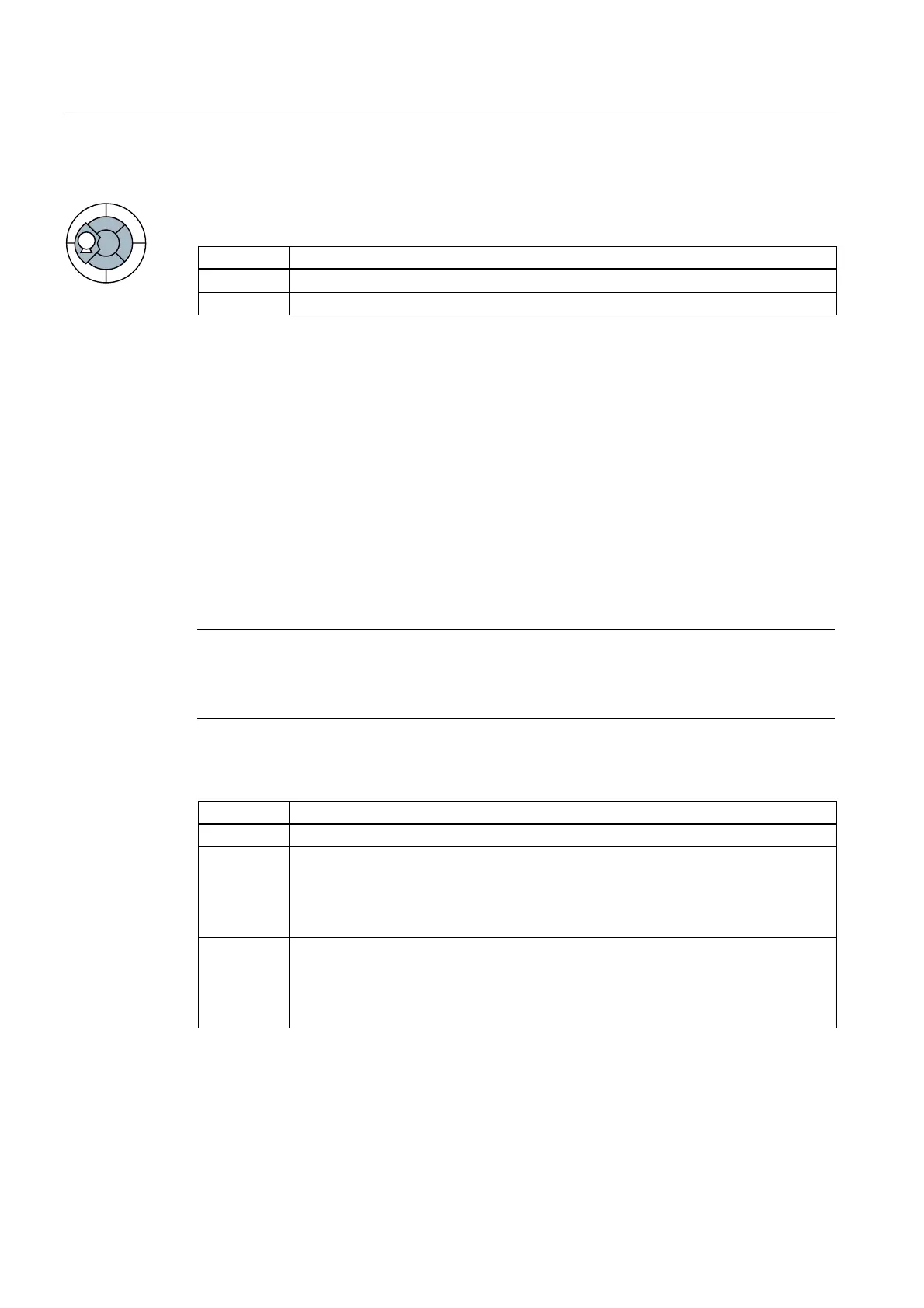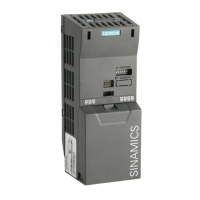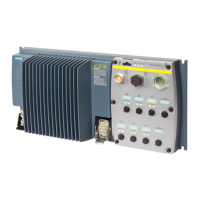Functions
5.7 Closed-loop control
CU240S and CU240E Control Units, FW 3.2
110 Operating Instructions, 03/2009, A5E02440075B AA
5.7.1.2 V/f control with linear characteristic
Table 5- 30 Setting the control type
Parameter Description
P0003 = 2 Extended access
P1300 = 0 Control type: V/f control with linear characteristic
Optimizing the starting characteristics for a high break loose torque and brief overload
The inverter can provide a higher voltage in the lower speed range and when accelerating.
Examples of applications where this is necessary, include:
● Utilizing the brief overload capability of the motor when accelerating
● Driven machines with a high breakaway torque
● Holding a load
Background information: The linear characteristic of the V/f control assumes an ideal motor
without resistive losses. The resistive losses in the motor stator resistance and in the motor
cable reduce the available torque and must not be neglected in all applications. These
losses play a more significant role the smaller the motor and the lower the motor speed. The
losses can be compensated by the V/f control by increasing the voltage at low speeds. (so-
called 'boost parameters': P1310 and P1311)
Note
Only increase the voltage boost in small steps until satisfactory motor behavior is reached.
Excessively high values in P1310 and P1311 can cause the motor to overhead and switch
off (trip) the inverter due to overcurrent .
Table 5- 31 Optimizing the starting characteristics for a linear characteristic
Parameters Description
P0003 = 2 Extended access
P1310 = … Voltage boost to compensate resistive losses
The voltage boost is effective for all speeds below the rated speed and continually
decreases as the speed increases.
The maximum voltage boost is effective at zero speed and is in V:
Rated motor current (P305) × stator resistance (P350) × P1310 /100
P1311 = … Voltage boost when accelerating
The voltage boost is effective from standstill up to the rated speed. The voltage boost
is independent of the speed.
The voltage boost in V is:
Rated motor current (P305) × stator resistance (P350) × P1311 /100
Additional information about this function is provided in the parameter list and in the function
diagrams 6100 and 6200 in the List Manual.
0

